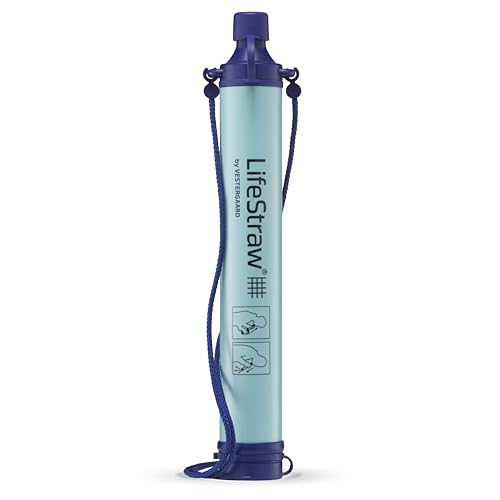Picture this: you’re lost in the wilderness, and your chances of rescue are fading fast. It’s in moments like these that a simple tool can become a lifesaver. A signal mirror might seem like an ordinary piece of glass, but in emergencies, it can be your best friend. Learning how to use it effectively could make all the difference when every second counts.
I’ve always been fascinated by survival gear, and the signal mirror stands out for its simplicity and effectiveness. Whether you’re hiking, camping, or exploring off the beaten path, knowing how to use this tool can help you communicate your location to rescuers. Let’s dive into the essentials of using a signal mirror and ensure you’re prepared for whatever adventure comes your way.
Understanding Signal Mirrors
Signal mirrors serve as essential tools in emergencies, especially for those of us who enjoy spending time in the wilderness. Their simplicity and effectiveness make them invaluable for hikers, campers, and adventurers, providing a reliable way to catch attention and call for help.
What Is a Signal Mirror?
A signal mirror is a reflective surface designed to create a bright flash of light that can be seen from a distance. Typically made of glass or durable plastic, these mirrors are often compact and lightweight. Their purpose lies in signaling rescue teams or fellow outdoors enthusiasts during emergencies. By directing sunlight toward a specific target, I can effectively communicate my location without using sound.
Types of Signal Mirrors
Different types of signal mirrors exist, each suited for specific situations. Understanding these types helps choose the best one for personal needs:
- Standard Reflective Mirrors: These mirrors provide a clear reflective surface and are widely used for general signaling. They often include a sighting hole for accuracy.
- Emergency Signal Mirrors: These mirrors typically feature a built-in compass or attachment points. I’ve found them handy for more precise signaling during outdoor adventures.
- Survival Kit Mirrors: Smaller and lighter, these mirrors often come with survival gear. They’re ideal for my backpack since they easily fit alongside other emergency tools.
Selecting the right signal mirror enhances safety while exploring the great outdoors, ensuring I’m prepared for any unexpected situations.
Importance of Signal Mirrors in Emergencies
Signal mirrors serve as essential survival tools in outdoor emergencies. They can make the difference between being found and remaining lost, particularly when faced with unexpected situations.
Signaling for Help
When I find myself in a challenging spot, a signal mirror offers a straightforward and reliable way to signal for help. Reflecting sunlight generates a brilliant flash visible from miles away. By angling the mirror toward any potential rescuers—hikers, search and rescue teams, or even pilots—I increase my chances of getting noticed significantly. It’s crucial to practice aiming the mirror in a safe environment, ensuring that I can do so quickly and effectively when the need arises.
Advantages of Using a Signal Mirror
Using a signal mirror comes with several advantages:
- Visibility: The bright flash created by the mirror can capture attention over vast distances, even in wooded areas or during poor weather.
- Durability: Made from glass or durable plastic, most signal mirrors withstand harsh outdoor conditions. They’re lightweight and fit easily in a backpack, making them convenient for camping or hiking.
- No Battery Required: Unlike electronic devices, a signal mirror doesn’t rely on batteries. It’s a dependable, low-tech option that works without the need for power sources.
- Versatility: Some signal mirrors come with built-in compasses or other survival tools, adding extra functionality to your gear. This versatility makes them a valuable addition to any outdoor enthusiast’s kit.
By carrying a signal mirror in my camping gear, I prepare for potential emergencies while enjoying the great outdoors.
How to Use a Signal Mirror in Emergencies
Signal mirrors are simple yet powerful tools that can save lives in emergencies. Here are key steps to maximize their effectiveness.
Preparing the Signal Mirror
Before heading out, I always ensure my signal mirror is clean and ready to use. Wipe any dust or smudges off the reflective surface for maximum visibility. If the mirror’s equipped with a built-in compass, check that it’s functional. Lastly, keep the mirror easily accessible in my pack or attached to my gear, so I can grab it quickly in an emergency.
Finding the Right Angle
Aiming the signal mirror accurately is crucial. I position the mirror toward the sun to catch its rays. Then, I extend my arm and hold the mirror in front of my face, using the reflection to aim at my intended target. I watch for the bright flash as it bounces off. Adjust the angle until I see the flash pointing toward my potential rescuer. Practicing this technique in different light conditions helps hone my skills.
Effective Signaling Techniques
When I signal for help, I use deliberate and rhythmic flashes. I create a series of brief flashes lasting about one second, alternating every few seconds. This pattern makes the signal stand out. To attract attention from a distance, I aim for high-contrast backgrounds, like dark forests or rocky terrains. I also remain patient, trying different angles and techniques. Remembering that it may take time for someone to see and respond to the signals, persistence often pays off in these situations.
Tips for Successful Use
Using a signal mirror effectively requires some practical knowledge. Following these tips can increase the chances of successful signaling in emergencies.
Choosing the Right Environment
Selecting the right environment can significantly impact the effectiveness of a signal mirror. I focus on open areas free of obstruction. Avoid signaling in dense forests or areas with heavy foliage, as these can block sunlight. Choose a backdrop that contrasts with the bright flash, like water or snow, to make the signal more visible. If possible, position yourself on a high point to enhance visibility. Wind and fog can also diffuse light, so I carefully check weather conditions before signaling.
Avoiding Common Mistakes
I’ve learned several common mistakes to avoid when using a signal mirror. First, I ensure the mirror is clean. Smudges and dirt can dull the reflection and minimize visibility. Next, I avoid directing my signal at close range; instead, I aim for the distance where rescuers are most likely to spot me. It’s essential to keep my hand steady while aiming—shaky hands can lead to missed targets. Lastly, I don’t forget to practice my signaling technique regularly. Familiarity with the mirror’s operation and signals can make all the difference in a real emergency.
Conclusion
Having a signal mirror in your emergency kit can really make a difference. It’s a simple yet powerful tool that can help you get found when you need it most. I’ve learned how crucial it is to practice using it and to be aware of your surroundings when signaling for help.
Remember to keep your mirror clean and accessible. The more familiar you are with your mirror and its capabilities the better prepared you’ll be in a tough situation. I hope you feel inspired to add a signal mirror to your gear and enjoy your outdoor adventures with a little extra peace of mind. Stay safe out there!











